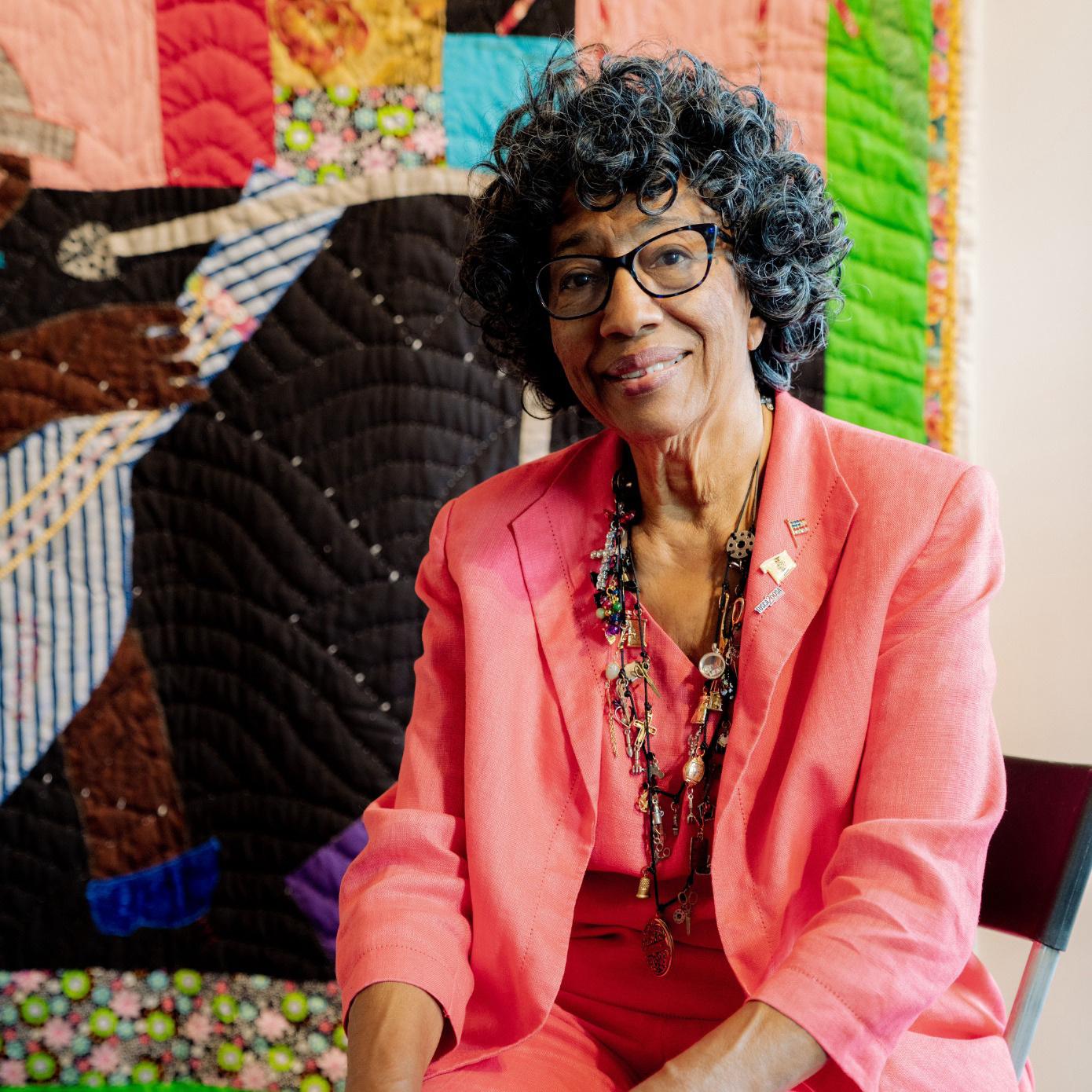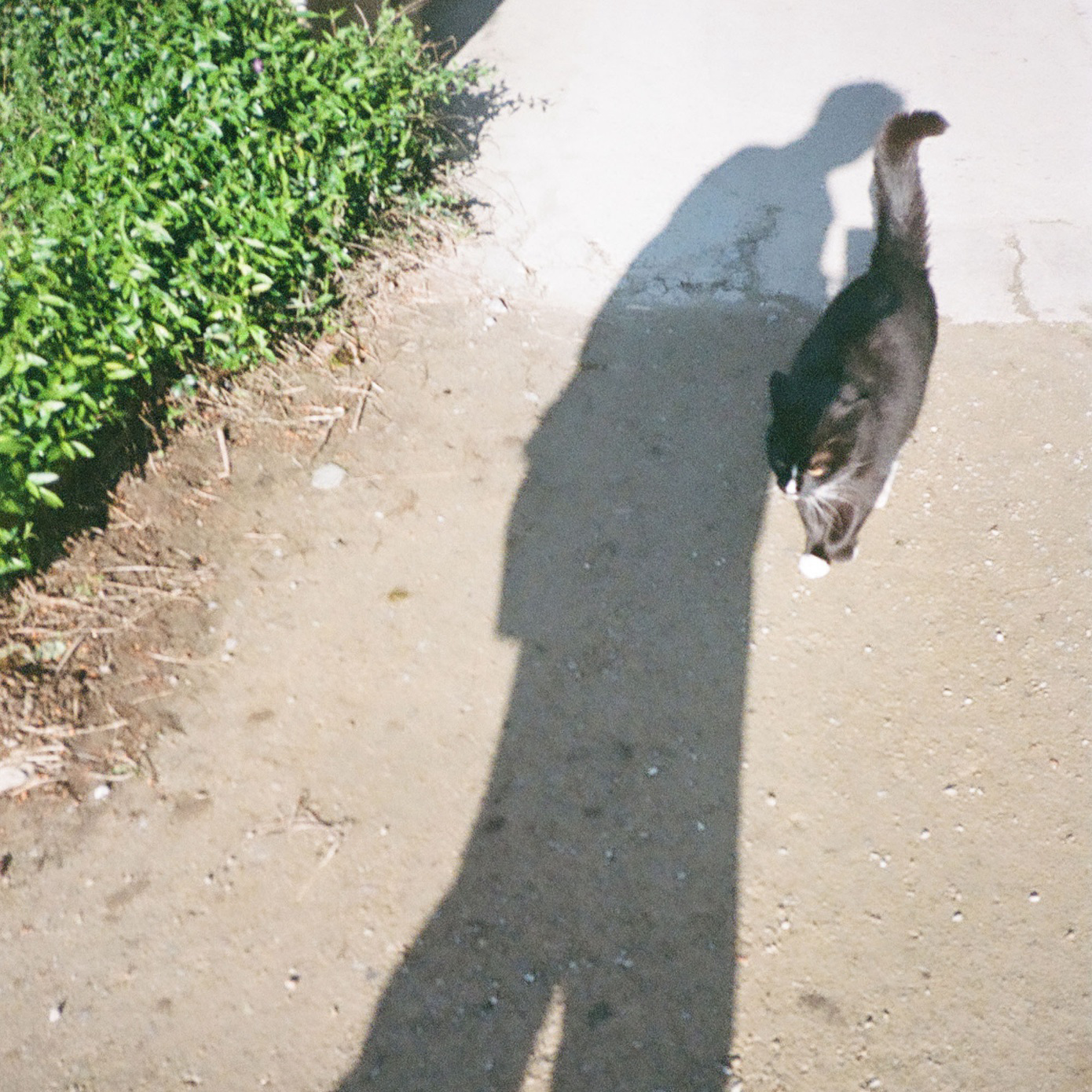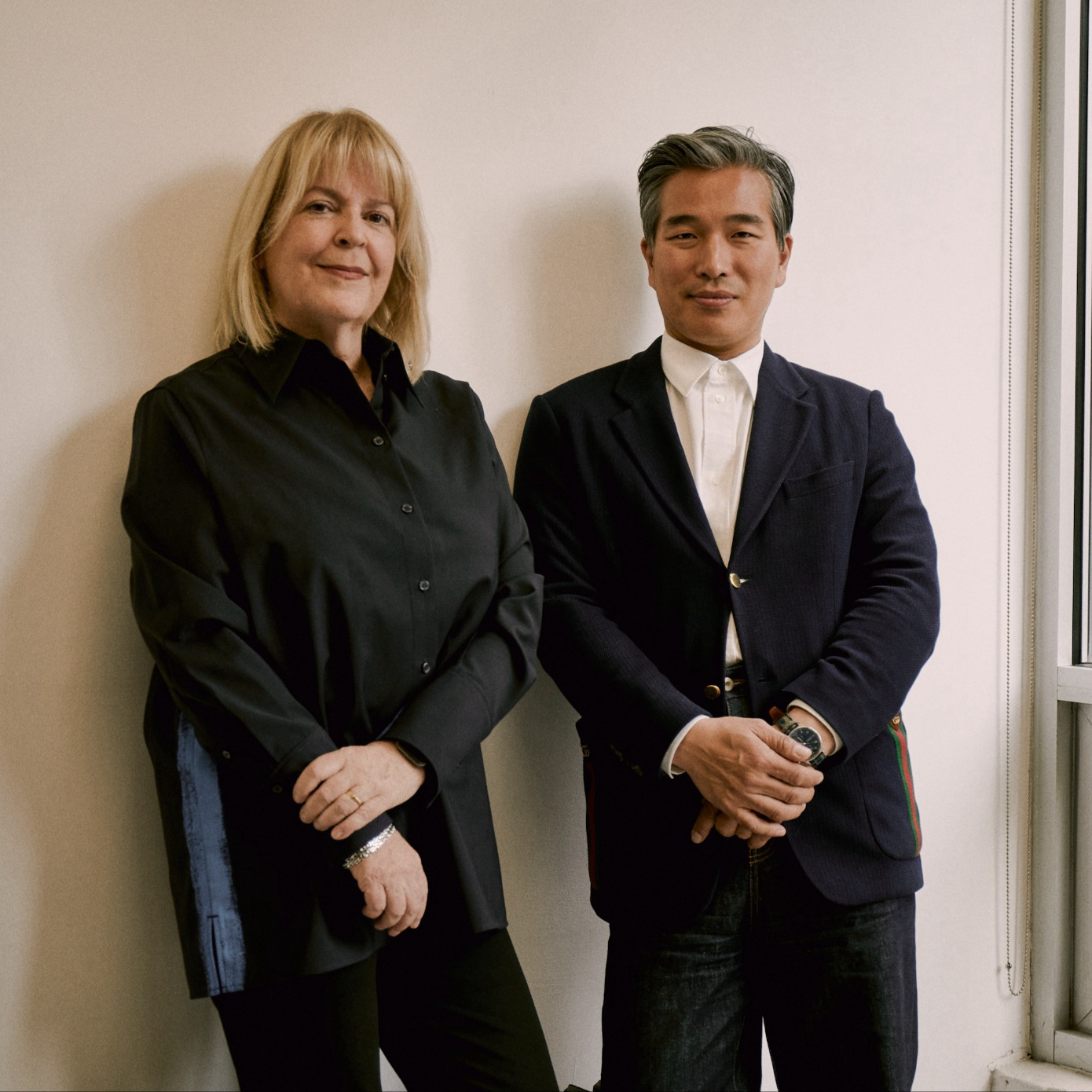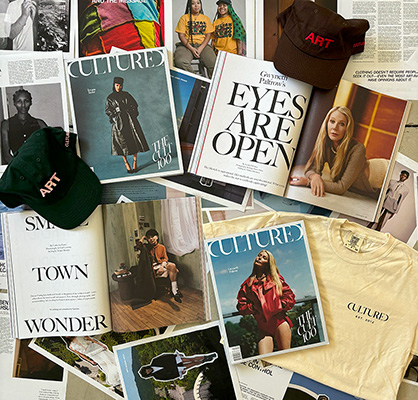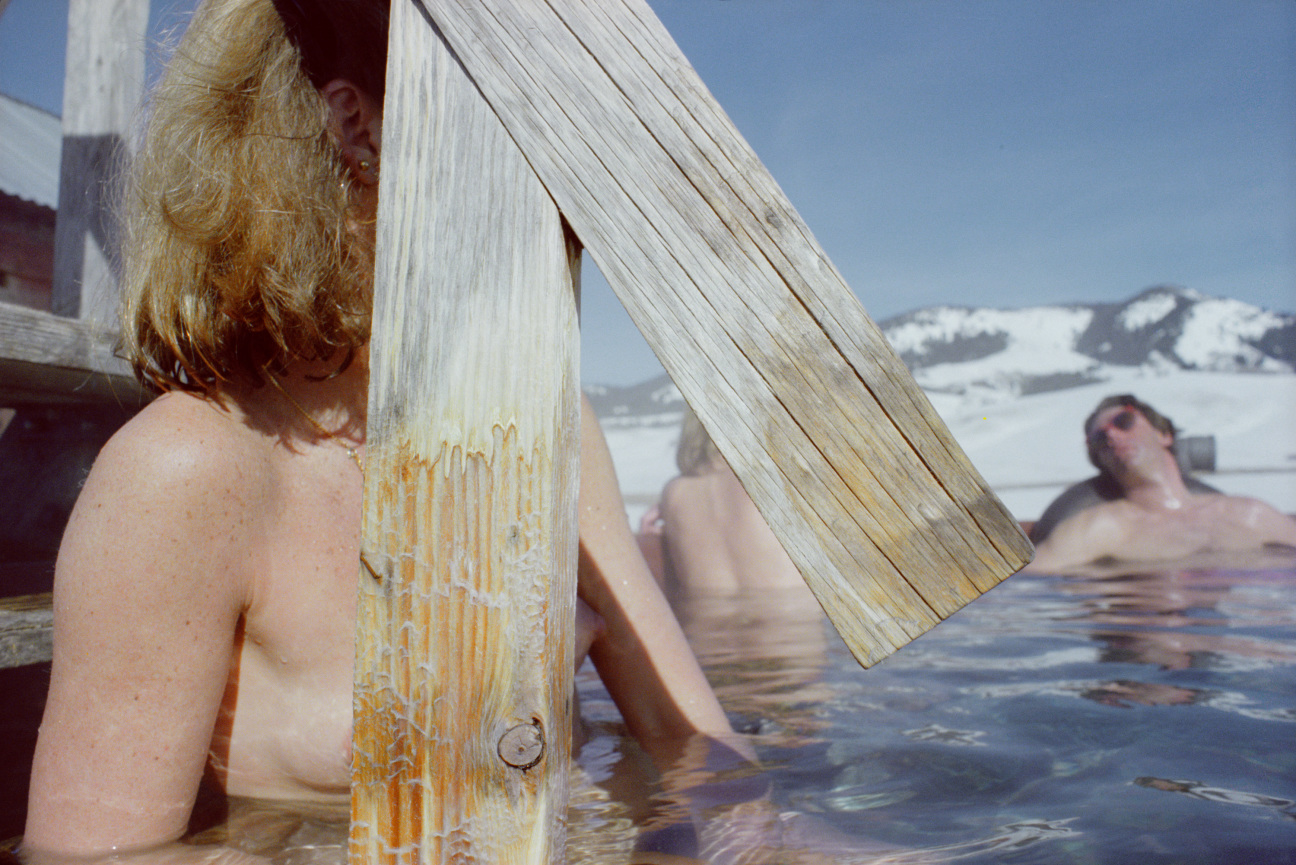
Tina Barney's new show at Kasmin gallery is titled “The Beginning” because that’s what it pictures—specifically Barney's own as an artist. Barney picked up her first Pentax in her late 20s, only after she’d become a mom and wife. In fact, it wasn't until she found herself living between Rhode Island and a flurry of Sun Valley Idaho ski resorts, with two children and a husband she’d married at 20, that she decided to start taking art classes. Her local, unassuming school, the Sun Valley Art Center, was not only a convenient springboard, but also surprisingly stacked program where Barney found a nurturing creative community and her earliest opportunities.
Far from the bloodshed of the Vietnam War, Barney’s elite backyard was populated with individuals exempt from the struggle who were pursuing strenuous activities for pleasure. These experimental years documenting and interrogating the escapist mindset of the privileged from the inside laid the foundation for the work that would eventually launch Barney’s career in 1983: the Museum of Modern Art’s landmark photography survey, “Big Pictures by Contemporary Photographers.” It was there, alongside a new generation of pioneering photographers like Barbara Kasten and Cindy Sherman, that Barney debuted Sunday New York Times, 1982, her first continuous 4 by 5 foot print–made possible by a recent quantum leap in printer technology. Mimicking the proportions of the large format camera she eventually became known for, this intimate masterwork dropped the viewer into a busy breakfast scene with a hunched over patriarch absorbed in the newspaper, his family hurrying around him. It reminds me of Adriaen van Ostade's peasant painting—only everyone is in polos, and the point of view we inhabit is that of the wallflower standing in the corner, just outside the fray.
I was not aware of this work until recently, when Barney herself straightened me out. I came to her work through a side door: an ex-boyfriend who sized me up and then gifted me her iconic book, The Europeans, as a kind of prescription for some perspective he thought I lacked. He promised me he’d introduce us when the time was right, but died before he could, and we were already broken-up by then. As a form of what felt like creative grieving, I decided to do what he would’ve done if I’d passed away suddenly: call a woman I knew for comfort! I dialed Barney, still a favorite photographer of mine, and introduced myself as someone trying to regain a lost friend by making a new one. I got more than I had hoped for.
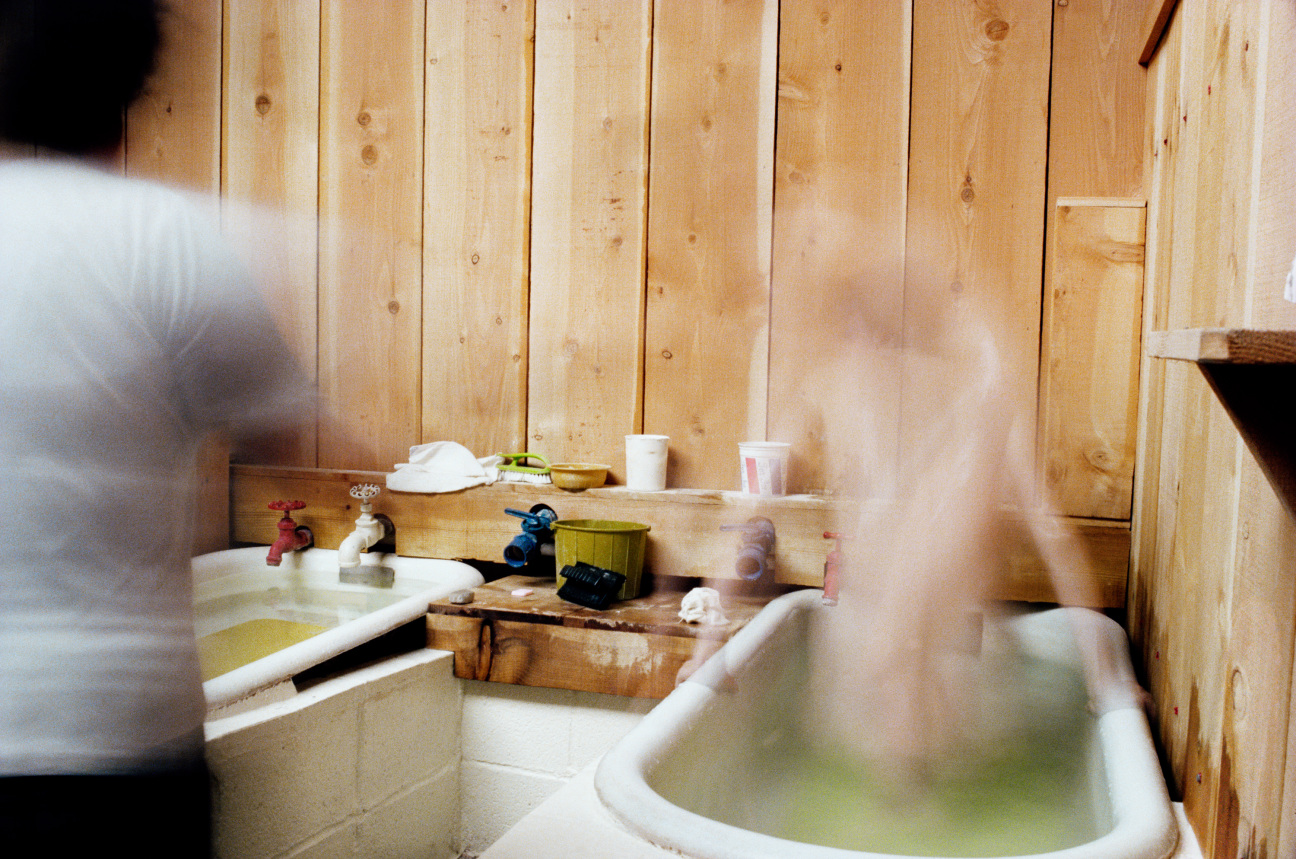
Barney changed my eyeballs forever. She also shot my first cover story: the Broad City girls in Eleanor Cayre’s Upper East Side apartment, thanks to the art collector’s unflinching munificence and the Broad City girls' largesse. The first time I saw Barney at work, so many things clicked into place about her sense of timing. It obliterated all the assumptions I had made about her beforehand. She wasn't a technical photographer; she was an instinctual one. And she wasn’t a pedantic choreographer; she was actually a hunter, a voracious looker, who maybe set up some traps but ultimately waited patiently for the kill shot.
All these thoughts resurfaced when I heard about “The Beginning,” and the images that would be on view. These snapshots, taken in the laboratory phase of Barney’s work, bear the first easter eggs of the career that unfolded. I decided the best way to unpack this trove would be with Barney herself, who is never not sharply on time nor caught without a thoughtful answer. She is one of the most present people I’ve ever met. Here is how our last conversation went.
Tina Barney: Thank you for being punctual. I love it.
Herriman: I know that it matters to you and I like to be punctual when I counts.
Barney: I am a Scorpio afterall.
Herriman: They sent me a PDF of the show to look at. I came up with some questions.
Barney: Did you know the photographs are going to be 16 by 20 inches? The scale is very unusual for me. My pictures are usually 48 by 60 inches, so it has to be mentioned that these are small and they'll be looked at in a very different way. I like to think that I don't even know what those differences are. I guess you could say there's an intimacy to them that you have to come up close. Then, at the same time, the eye can almost gather all the information in a quicker amount of time because they're smaller. Those optical illusions are very interesting.
Herriman: I wanted to ask you about leisure and sport, because I was going through the images, and there's so many images of bodies in motion.
Barney: I never thought about that for a 10th of a second. The reason is that I lived in a few resorts when I made these pictures. That's where I learned everything: at an art center in Sun Valley. There, sports were very much a part of our lives. And then we would go on vacations in the springtime to places that had to do with water. We would go with our best friends and their children. That's why, all of a sudden, there's tropical backgrounds like palm trees.
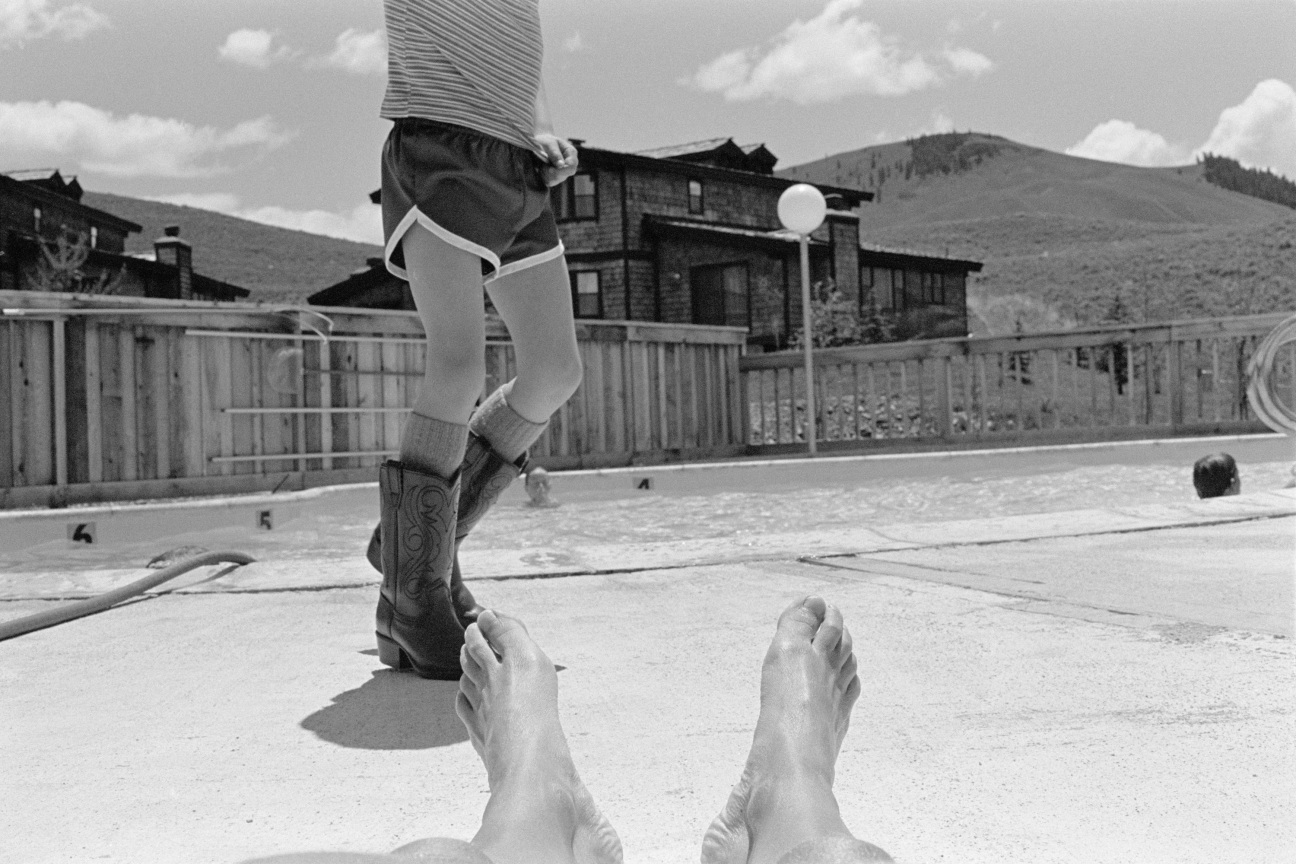
Herriman: The water often feels like a collaborator in these compositions. For instance, in Cowboy Boots, the pool becomes almost like a horizon line, whereas in Bottom of Shoot, it almost becomes a canvas.
Barney: I hadn’t even thought of that. There are two hot tub pictures, too, one black-and-white and one color. There’s also a mother and two girls sitting on the ground by a pool. That's a very well-known pool in Sun Valley that's been there since the beginning of Sun Valley. The water is so hot that you can actually go to a pool with snow around you. Sun Valley was known for that. Judith Smoking is an image of hot springs near Sun Valley. It was a tradition that we all would go there during photo classes. We'd have our get togethers at the hot tub, unusual for someone from the East Coast. Everyone just took their clothes off. We never did. We were pretty square.
Herriman: Nudity is something you play with, but it's always blushed with modesty.
Barney: Well, that's probably because I am. That's because of me; I'm square. I’m very square. I went there when I was 28 years old. I was married and had two kids, and nobody was married and had kids. They were our friends, but my classmates were on a totally different planet from me.
Herriman: That must have been a nice reprieve.
Barney: It was fun, really fun, because I had never gone to college.
Herriman: It sounds snug and insulated.
Barney: Well, no, what was really unusual is it was a ski resort, but the woman whose husband owned Sun Valley was very interested in the arts. She started the Sun Valley Art Center. Without that, I would have probably stayed there. I don't think I would have ever done anything or learned anything intellectual. But here was this art center that brought in artists from all over. I was interested in photography, because I already started collecting photography in the 1970s when photographs by Edward Weston and [Henri Cartier] Bresson were still $100. And here were all these teachers that had not only studied with some of those people, but I could take these workshops. That's how it all began. I had the combination of being a mother, being a student, and being an athlete. What more could you ever want?
Herriman: Do you have notes from this time or other documents? I’d love to read your diary.
Barney: I have letters, because my friend Judith became a writer. She became a writer and I became a photographer there. We started writing each other letters. She left Sun Valley before me. That's probably the most in-depth record of that time that I have.
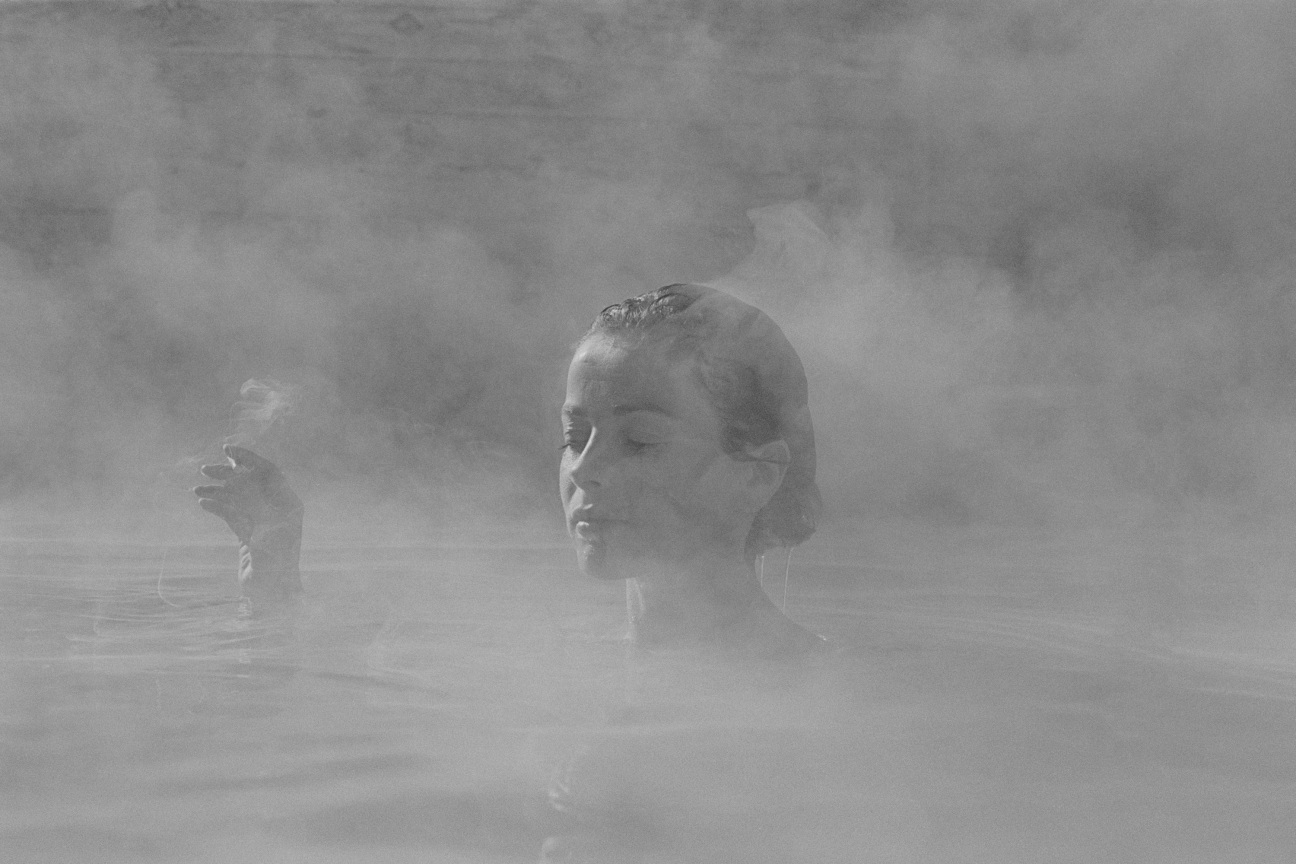
Herriman: Can I read them?
Barney: Well, we're doing a book together because we went to India in 1990 when I got a Guggenheim. Judith wrote the manuscript, and it's basically a diary of every day that we spent in the middle of nowhere with this woman that I had met on a Lindblad travel tour in 1985 and never forgot. We're trying to do a book that we've been trying to do for 30 years.
Herriman: I’ll be your cheerleader.
Barney: You would? We don't know the name of it yet.
Herriman: We will deal with those details later.
Barney: Anyway, back to you asking me if there's any record. There is a record because I have snapshots. There's actually a VHS film of one of the shows I had. I can't remember the year, but I left [Sun Valley] in 1983. It had to be before 1983.
Herriman: 1983 sounds like your year.
Barney: Yes, I got divorced and I started using the [large format 4 by 5 camera] in ’83, but before that I did a show of interiors. I constructed this entire interior with tulle around it as curtains, and I just photographed interiors and hired different craftsmen in Sun Valley to make the frames. That's when I began thinking of interiors. Then, I put the people in the pictures. But that's an entirely different body of work from what they're showing at Kasmin. Kasmin is before all that. Kasmin is about going around taking pictures half-seriously because my standards were so high. For a very long time, I never considered myself an artist. I collected photographs. I wasn't fooling myself. The pictures I took were trying to pay attention but they weren't like "Hey, this is an important picture." This is why it's called “The Beginning.”
Herriman: What else can you tell me about the beginning?
Barney: I headed up to Sun Valley’s photo department. This is a tiny little school. People walking in with their dogs, throwing their cross-country skis on the floor, totally unpretentious with very good teachers. Mark Klett came in there. He was the first color teacher there. That changed my life. I had started in black-and-white because color was so important to me that I didn't think I was ready. My mother, a model and interior designer, raised me in color, but Klett taught it to me in the darkroom. Klett also used the 4 by 5 camera to do a project called re-photographic survey. Those two things influenced me. The color and the 4 by 5 from him.
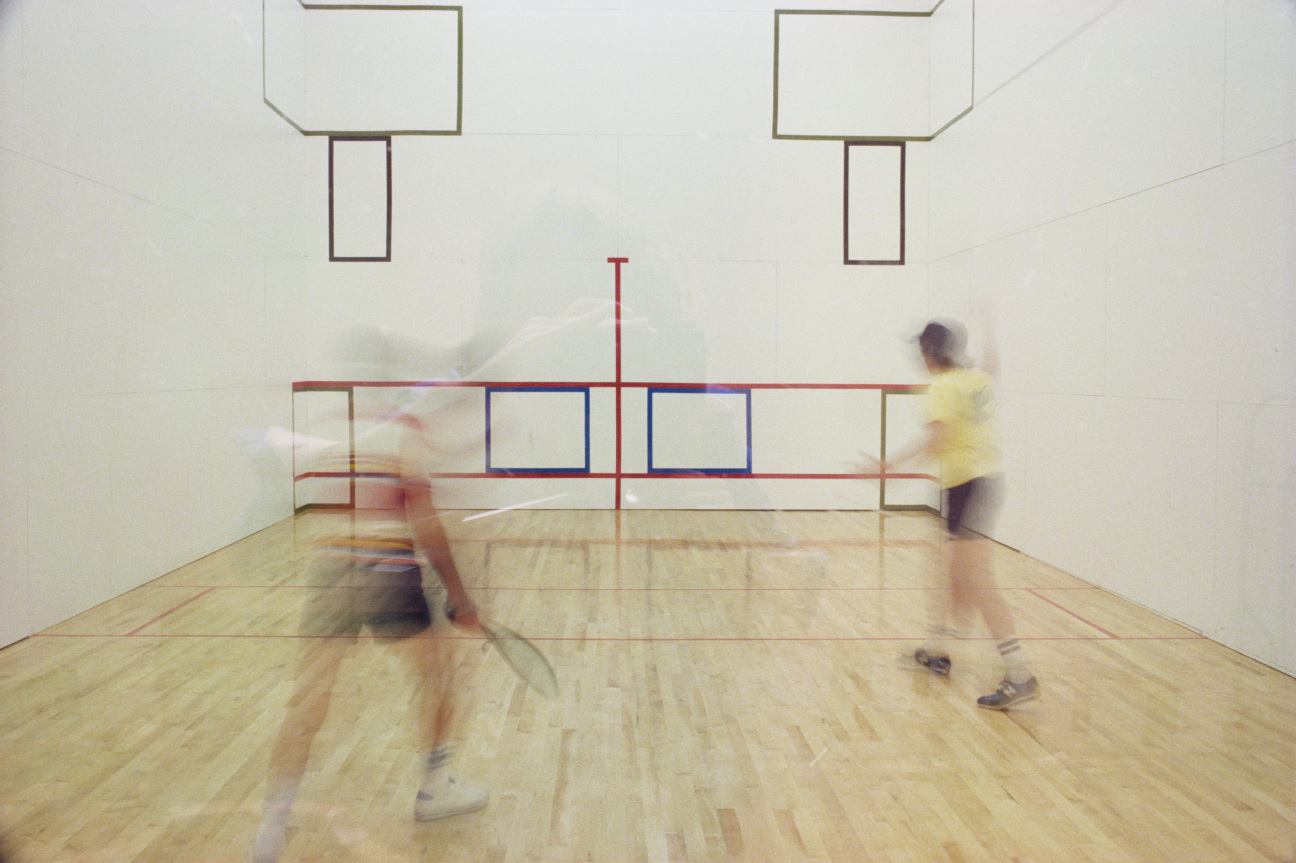
Herriman: I always think about the fact that the first time you see your images they are upside down in the back of the large format camera viewfinder.
Barney: Nobody knows that. I don't know if I told you this, if you speak another language besides your own, your brain does a transfer. It's automatic when you're fluent. That's what happens in a view camera. Your brain automatically performs the flip because you're so used to looking that way. It becomes fluent. So I don't think I construct the pictures differently because they're upside down.
Herriman: You do speak another language though that comes through in the photos. I think that is why they mesmerize me. I’m lost in translation.
Barney: Oh, I love that.
Herriman: I feel like a lot of people know the images from "The Europeans," and so many of those shots are interiors. In these Pentax shots you are showing, you didn’t have control over the elements. What did you have control over?
Barney: I had no idea what I was doing. I'm amazed that they are as in focus as they are and that there's a depth of field. I'm so untechnical and I always have been. I know what I want to get and I know how to get it, but there's a real limitation. I knew nothing about interior lighting or lighting until 1990-something. I must have known that the smaller aperture was going to get you the better depth of field. I knew those basics and I knew how to get them. If people only knew the speed in which I photographed those water slide pictures and always have. Even with the 4 by 5, even with an 8 by 10, nobody can believe how fast I am. That's how I was able, from the very beginning, to get the kind of pictures I got, because I'm a very fast-moving person. I had to climb a hill to get those waterside pictures. I didn't have time to think.
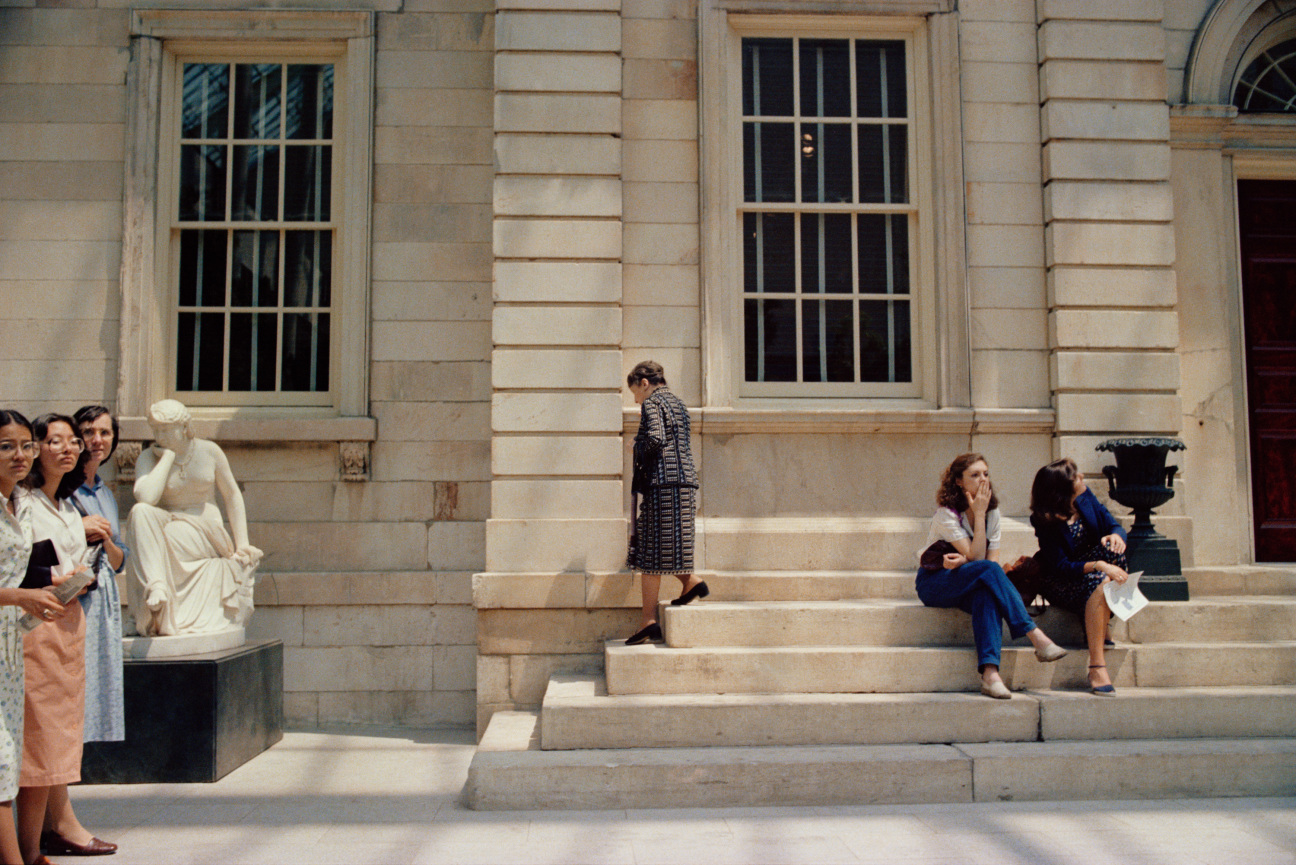
Herriman: What about this picture in the Met, The American Wing?
Barney: This is a long story. In 1980 or '81, I broke my ankle in Sun Valley, and the next day I was moving back to Watch Hill for the summer. I had a couple of friends visiting New York and I rented a wheelchair because they wanted me to take them around. I took my Pentax, but had to use a tripod, which I had never done before. I started photographing in the museum with a tripod. What I found out was that I could photograph inside, that the resolution could be fantastic if people held still. I have that picture of that old lady climbing the steps of the American Wing and then a couple of others like The Art Gallery, which is one of my favorite photographs.
Herriman: I like it too. It reminds me of one of those new David Salle paintings and of the fact that you are always out there looking at art. Maybe more than anyone I know.
Barney: The Art Gallery is also actually one of the first pictures I blew up 30 by 40 inches, because at that point I didn't even know you could make them 4 by 5. That was another milestone. I did all these stepping stones and there were years in between them: from the black and white, to the color, to the tripod, to the 4 by 5.
Herriman: It’s funny to hear about all these little moments along the way, because in my experiences working with you, everything is so seamless and full at the same time.
Barney: The thing I'm looking for is the structure and the composition always, and then getting the people to do the right thing. When I went to the 4 by 5 and went to blowing up the pictures, that took years. Then, also the ratio of success....I would have a show every other year when I was with Janet Borden. Her gallery fit nine 48 by 60 photographs. That meant every other year I would only get nine successful pictures. When you think about that and what people do today....
Herriman: Infinity shots.
Barney: I was just on a job and they made me use the 4 by 5 and we shot 70 sheets of film. I'm still so fucking mad about the waste of that. I would take that in about half a year.
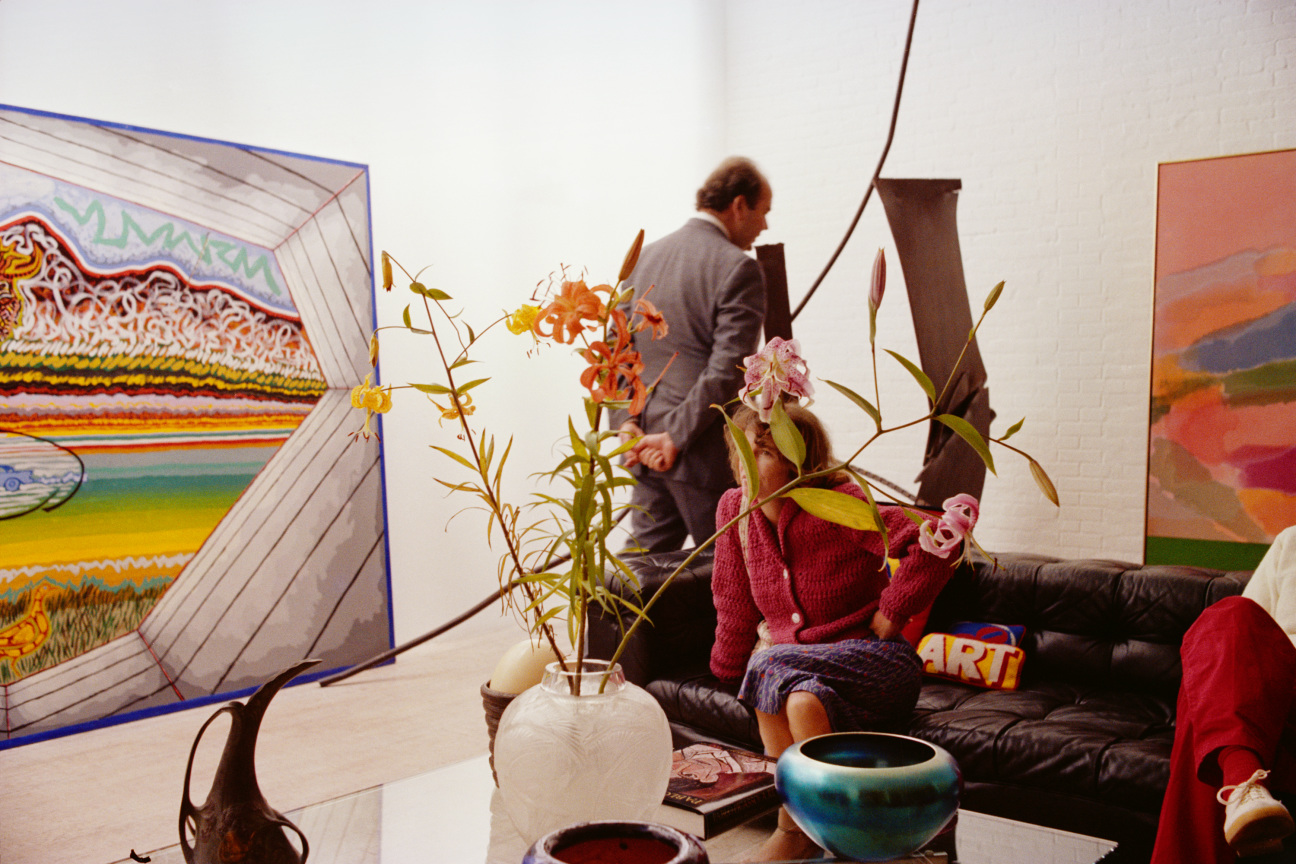
Herriman: You believe in the shot.
Barney: Well, it's also the whole method of using a view camera. It's not just a slam, bam, thank you ma'am thing. When I started doing this, most photographers were poor. They didn't have the money to shoot 70 sheets of film. They would shoot one or two or three. Did you know that today one box of 10 sheets cost $300?
Herriman: No.
Barney: Stephen Shore was just interviewed in The New Yorker, and he said one shot of 8 by 10 is $75 because you have to count the processing, the contacting, et cetera. Each picture is $75, one photograph. That changes the way you photograph.
Herriman: Absolutely.
Barney: That's 8 by 10. That's one size bigger. I don't even know if you've ever seen an 8 by 10 camera, but I'm using one now. I'm doing another project at home in Rhode Island [that's] still life.
Herriman: You always have so many bodies of work going—
Barney: Well, I'm trying. I like to not do anything, and I'm still painting. I do these watercolors that I love, which I've never shown...
Herriman: That's another book.
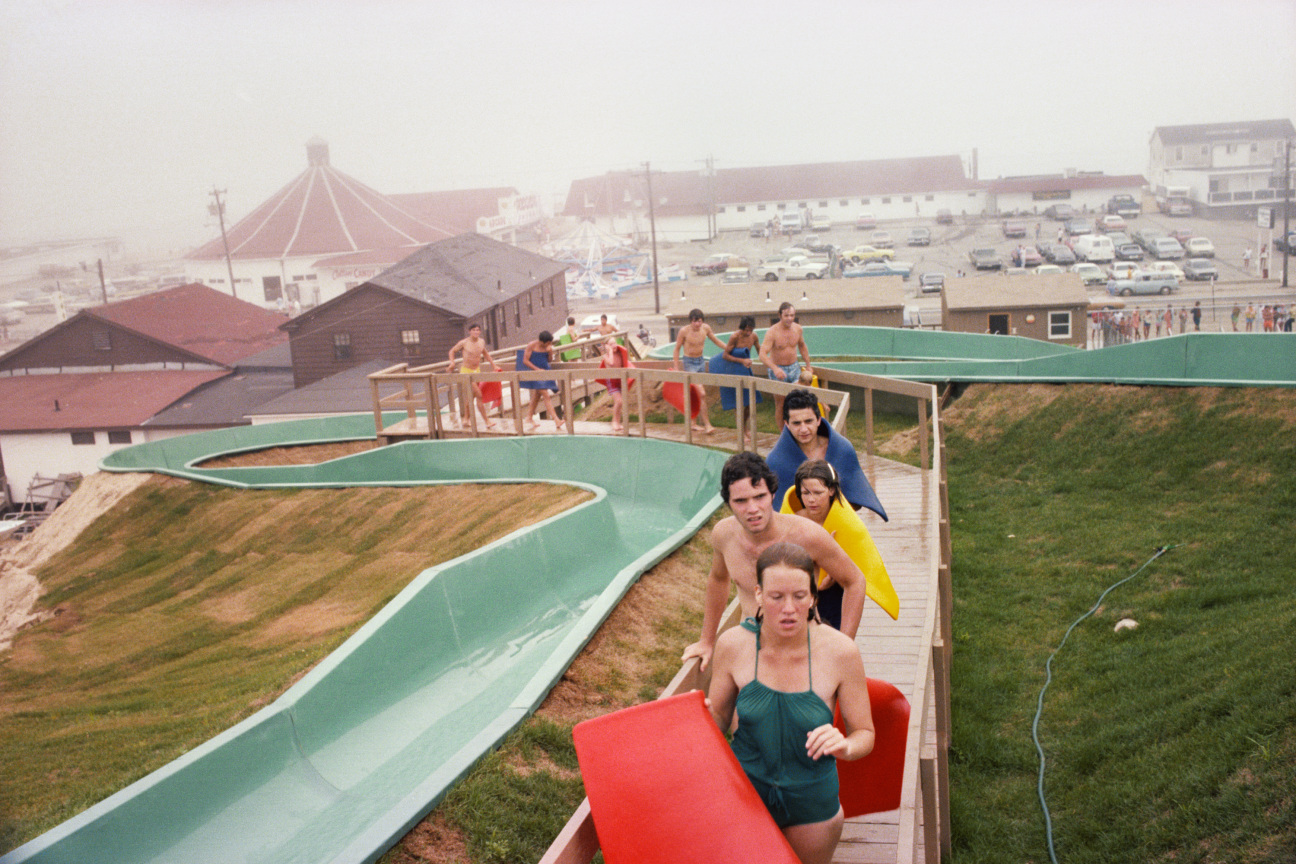
Barney: It is. People think you just crank books out but oh boy, this book. During Covid, I had nothing to do, so I started sifting through all these old 35-millimeter pictures. I scanned them and in scanning them, I edited very quickly, very loosely. Then tried to find someone to design the book, because you can't go find a publisher if you don't have someone put the book together. I met a guy who's brilliant called Tod Lippy, who was the publisher of a magazine called Esopus. Ever heard of Esopus?
Herriman: No sadly.
Barney: A beautiful, brilliant magazine. He's not doing it anymore because it's so expensive. I gave him the scans and he's the one who designed the first dummy of this book, not knowing one single thing about each person, or the story I just told you, nothing. I did that once before with Chip Kidd. I gave all the negatives or the scans to Chip and he made the book without knowing one single thing. I sometimes think that's a much more interesting way to do it. Todd really did this book, and then I found Radius, and David Chickey is humble enough that he let me keep the form that Tod Lippy made, and then just made some changes that he liked. There's a collaborative project there between those two designers.
Herriman: More acts of translation and exchange....I think I have what I need for a beginning.
Barney: You can always ask for more.

